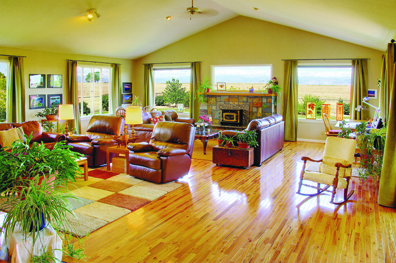Time to Winterize
19 Jan 2014
We need to prepare not only ourselves, but also our homes for cold weather
By Meagan Vitek Dust off the skis, dig out the coats, layer on clothing and stock up on tea. When brisk winds blow, we need to prepare not only ourselves, but also our homes for cold weather. Jack Frost is here! According to the U.S. Department of Energy, heating and cooling accounts for more than half (54 percent) of a home’s utility costs. Before heading to the store to buy winter-proofing supplies, though, you need to determine your home’s specific needs. Nate Burger, owner of Eco Handyman in Boulder, recommends starting with an energy audit. During an audit, a professionally trained energy auditor “tests the entire house for areas of missing insulation and interleakage points,” he explains. This gives you a road map on how to improve those areas. While an energy audit isn’t mandatory, it eliminates the possibility of addressing the wrong problem. Burger compares an audit to an X-ray. “If you think you broke your arm, you just don’t go to a doctor to get your arm set, you get an X-ray first. You want to know what the exact problem is, and then solve it.” An audit can make the money you spend on energy improvements stretch further, says Burger, who so strongly believes in energy audits that his company credits the price of one to future work.
Whether you get an audit or not, if you’re a Boulder County resident you can call EnergySmart at 303-544-1000 for free advice and resources to make your home more energy efficient. The free phone consultations can help you determine the best first steps for your home.
If you do get an audit, an EnergySmart advisor will help you locate a qualified auditor, present and explain the audit report on your home’s energy use, determine the most cost-effective improvements, help you acquire and evaluate bids from EnergySmart–approved contractors, and help you find and apply for rebates you may be eligible for.
While an energy audit isn’t mandatory, it eliminates the possibility of addressing the wrong problem. Burger compares an audit to an X-ray. “If you think you broke your arm, you just don’t go to a doctor to get your arm set, you get an X-ray first. You want to know what the exact problem is, and then solve it.” An audit can make the money you spend on energy improvements stretch further, says Burger, who so strongly believes in energy audits that his company credits the price of one to future work.
Whether you get an audit or not, if you’re a Boulder County resident you can call EnergySmart at 303-544-1000 for free advice and resources to make your home more energy efficient. The free phone consultations can help you determine the best first steps for your home.
If you do get an audit, an EnergySmart advisor will help you locate a qualified auditor, present and explain the audit report on your home’s energy use, determine the most cost-effective improvements, help you acquire and evaluate bids from EnergySmart–approved contractors, and help you find and apply for rebates you may be eligible for.












